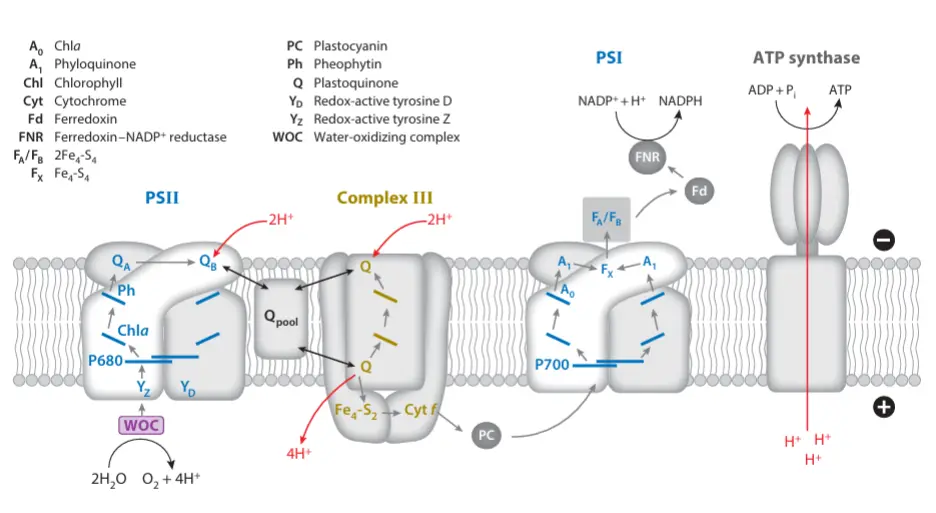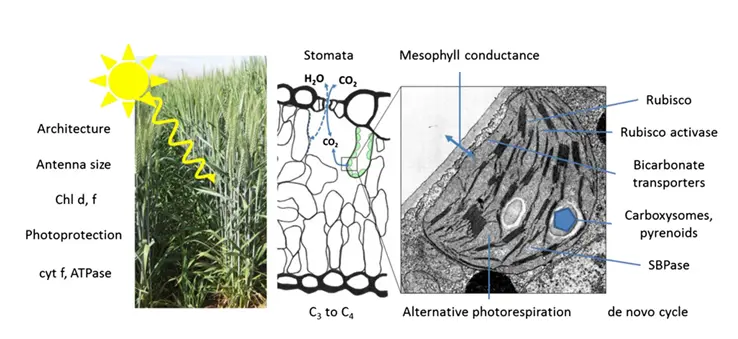The Evolution of Photosynthesis:
From Ancient Microbes to Green Plants

Photosynthesis is the mechanism by which plants capture sunlight and convert it into biochemical energy, forming the foundation for nearly all life on Earth. While plant growth relies on photosynthesis, it is overly simplistic to assume that growth rate is directly proportional to the rate of photosynthesis. Sustained growth also requires the uptake of water and nutrients, alongside light and carbon dioxide, and often involves competition with nearby plants. To access these resources, plants must allocate biomass, and continuous respiration is needed to support and maintain all living cells within the plant.
The Emergence of Oxygenic Photosynthesis
A major evolutionary breakthrough occurred when certain bacteria developed the ability to split water molecules during photosynthesis, releasing oxygen as a byproduct. These organisms, known as cyanobacteria, are considered the evolutionary ancestors of all modern photosynthetic plants. This advanced form of photosynthesis is called oxygenic photosynthesis.
The impact of this innovation was profound. Prior to this, Earth’s atmosphere contained little to no free oxygen. As cyanobacteria proliferated, oxygen began accumulating in the oceans and atmosphere. This led to the Great Oxygenation Event (GOE), which took place around 2.4 billion years ago. Initially, oxygen reacted with dissolved iron in the oceans, forming iron oxide (rust) that settled on the seafloor. Over time, oxygen levels rose in the atmosphere.
Although oxygen was toxic to many of the existing anaerobic microorganisms, its presence paved the way for the evolution of aerobic respiration, a much more efficient energy-generating process. This transition opened new evolutionary pathways, eventually leading to the development of more complex and diverse forms of life.


Electron Transport and Energy Conservation in Oxygenic Photosynthesis
In oxygenic photosynthesis, electron transport and energy conservation are tightly coupled processes that convert light energy into chemical energy in the form of ATP and NADPH. The process begins in Photosystem II (PSII), where light energy excites electrons derived from water, leading to the photolysis of water molecules and the release of oxygen. These high-energy electrons pass through an electron transport chain that includes plastoquinone, the cytochrome b6f complex, and plastocyanin, ultimately reaching Photosystem I (PSI), where they are re-energized by another photon of light. From PSI, electrons are transferred to ferredoxin and used to reduce NADP⁺ to NADPH. Simultaneously, as electrons move through the chain, protons are pumped into the thylakoid lumen, generating a proton gradient across the membrane. This proton motive force drives ATP synthesis through ATP synthase in a process known as photophosphorylation. Together, the production of NADPH and ATP provides the energy and reducing power required for carbon fixation in the Calvin cycle, while oxygen is released as a byproduct of water splitting.
Targets that have been identified to improve photosynthesis
Several specific targets have been identified to improve the efficiency of photosynthesis in plants, with the goal of enhancing crop yields and resource use. One key target is the optimization of RuBisCO, the primary enzyme responsible for carbon fixation, by increasing its catalytic efficiency or reducing its affinity for oxygen to minimize photorespiration. Another target involves the introduction of carbon-concentrating mechanisms (CCMs), such as those found in cyanobacteria and algae, to boost CO₂ availability near RuBisCO. Modifying light-harvesting antenna complexes to reduce energy loss and improve light distribution within the leaf canopy is also a significant focus. Enhancing electron transport efficiency between Photosystem II and Photosystem I, and optimizing the balance of ATP and NADPH production, are additional molecular targets. Researchers are also exploring the incorporation of C4 and CAM pathways into C3 crops to increase photosynthetic efficiency under stress conditions like drought and high temperatures. These targets are being pursued using advanced tools such as genetic engineering, synthetic biology, and CRISPR-based gene editing, aiming to develop crops better suited for future environmental and food security challenges.
Structural Innovation
Leaf Architecture and Light Capture
Beyond biochemistry, the evolution of photosynthesis led to innovations in plant structure. Leaves became optimized for light absorption, gas exchange, and water transport
Development of chloroplast-rich mesophyll tissues.
Photosynthesis in silico: Simulating the Green Engine of Life
Photosynthesis in silico refers to the use of computational models and simulations to study, analyze, and optimize the complex biochemical and biophysical processes involved in photosynthesis. This approach allows researchers to explore the intricate dynamics of light absorption, electron transport, carbon fixation, and energy conversion without the limitations of in vivo experiments. By integrating data from molecular biology, biochemistry, structural biology, and plant physiology, in silico models can simulate photosynthetic pathways at multiple scales from individual protein interactions (like RuBisCO kinetics) to whole-plant performance under varying environmental conditions.
Applications of photosynthesis in silico include identifying genetic engineering targets for improving efficiency, modeling the effects of climate variables on crop productivity, and designing synthetic or hybrid systems such as artificial leaves. Tools like flux balance analysis (FBA), systems biology modeling, and machine learning algorithms enable precise predictions of how modifications to enzymes, pigments, or metabolic pathways could impact overall photosynthetic output. Ultimately, photosynthesis in silico provides a powerful, cost-effective platform for accelerating the development of high-yield crops, enhancing carbon capture strategies, and guiding innovations in synthetic biology and renewable energy.
Future Innovation: Photosynthesis in Synthetic Biology and Climate Solutions
Today, scientists are studying the evolution of photosynthesis not only to understand life but also to engineer better crops, develop clean energy, and mitigate climate change

